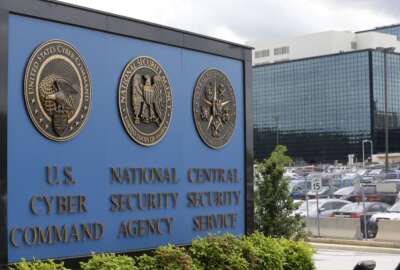HHS promotes simpler e-health record exchanges
The Office of National Coordinator for Health IT will spend the next year making it easier for health care providers to share patient data. Data sharing and...
By Jason Miller
Executive Editor
Federal News Radio
The Office of the National Coordinator for Health Information Technology wants to make exchanging electronic health records as easy as sending an e-mail.
David Blumenthal, the national coordinator for Health IT in the Department of Health and Human Services, said it’s not enough for the government to fund and promote the use of e-health records if the exchange of patient data doesn’t happen seamlessly.
“The most important thing we have to do now is make this exchange of information easier and more wide spread because it’s really hard to do,” Blumenthal said after his speech at conference on health IT Thursday sponsored by the Montgomery County, Md. Chamber of Commerce in Bethesda, Md. “In some ways it’s a lot harder than learning to use the record itself. The reason it’s so hard to do is because it means people have to learn to work together across organizational boundaries, geographical boundaries and legal boundaries, and that is always hard no matter where you are or who you are.”
ONC will focus on this data sharing issue over the next six-to-eight months. Blumenthal said part of the answer will be to promote the use of the National Health Information Network (NHIN). But ONC also will promote patient data sharing by creating an exchange process similar to e-mail.
“We also are thinking about how direct e-mail can be useful so not everyone has to do the exactly the same thing to be successful in exchange,” he said. “We are trying to meet the world of health care where it is now.”
The exchange of health records brings into focus two of the biggest remaining barriers ONC continues to try to address.
Since President Bush announced in 2004 that every American will have an electronic health record in five years, HHS, through ONC, has been trying to remove roadblocks across four barriers: funding, technology assistance, interoperability and security and privacy.
Blumenthal said the Obama administration, through the Recovery Act, provided more than $19 billion in funding.
ONC has set up 62 regional extension centers to provide assistance, training and support services to doctors and hospitals in making health IT decisions. More than 40,000 health care providers have used the extension centers, Blumenthal said.
And finally, ONC, along with the National Institute of Standards and Technology, are taking care of the interoperability issue. Blumenthal said ONC has approved six independent groups to certify e-health records products to guarantee they meet interoperability standards. NIST also has played a significant role in this process.
He said these six organizations have certified more than 250 products in just six months.
But the security and privacy barrier is one of the remaining challenges. Blumenthal said ONC, the vendors and the health care providers must ensure the records will be protected and kept private.
Another way Blumenthal said ONC can help address the security and privacy issue is through the health IT workforce.
He said ONC is providing funding to 84 community colleges across the nation to create classes in health IT.
“The health IT sector is short of trained professionals,” Blumenthal said. “This year we will graduate 3,400 health IT professionals. This program began in September. We hope annually thereafter to graduate 10,000 per year until we reach a total of 40,000. We estimate the national shortage of health IT professionals is about 50,000.”
Despite these barriers, Blumenthal said electronic health records are taking hold. He said the number of hospitals and physicians using this technology grew to 30 percent from 20 percent between 2009 and 2010.
Additionally, recent surveys show 80 percent of hospitals and 40 percent of doctor offices says they will adopt e-health records in the near future.
HHS, through the Centers for Medicare and Medicaid Services, is trying to push the adoption forward. CMS is handing out millions of dollars in incentive payments to Medicaid providers who meet the definition of meaningful use of health IT.
Medicare providers who meet the definition of meaningful use can start receiving payments May 1. Blumenthal said the first set of $18,000 checks should begin going out this summer.
The registration process opened Jan. 3 for Medicare health care providers and more than 13,000 have signed up, he said.
“This technology is inevitable and can’t be avoided,” he said. “Doctors and nurses can’t use their iPhones, iPads and other technologies for everything else, but stay in the 1950s to treat patients.”
(Copyright 2011 by FederalNewsRadio.com. All Rights Reserved.)
Copyright © 2025 Federal News Network. All rights reserved. This website is not intended for users located within the European Economic Area.





